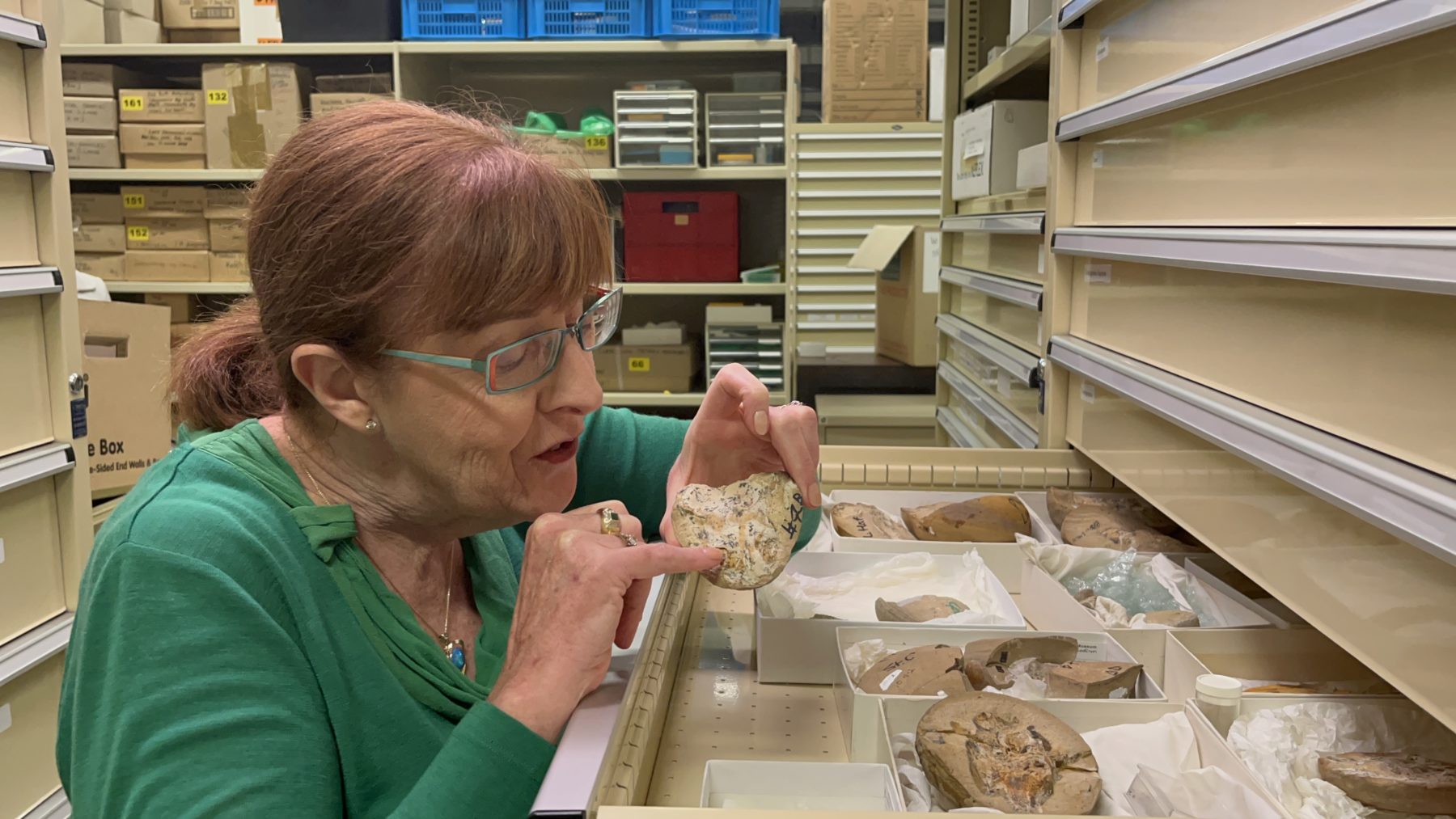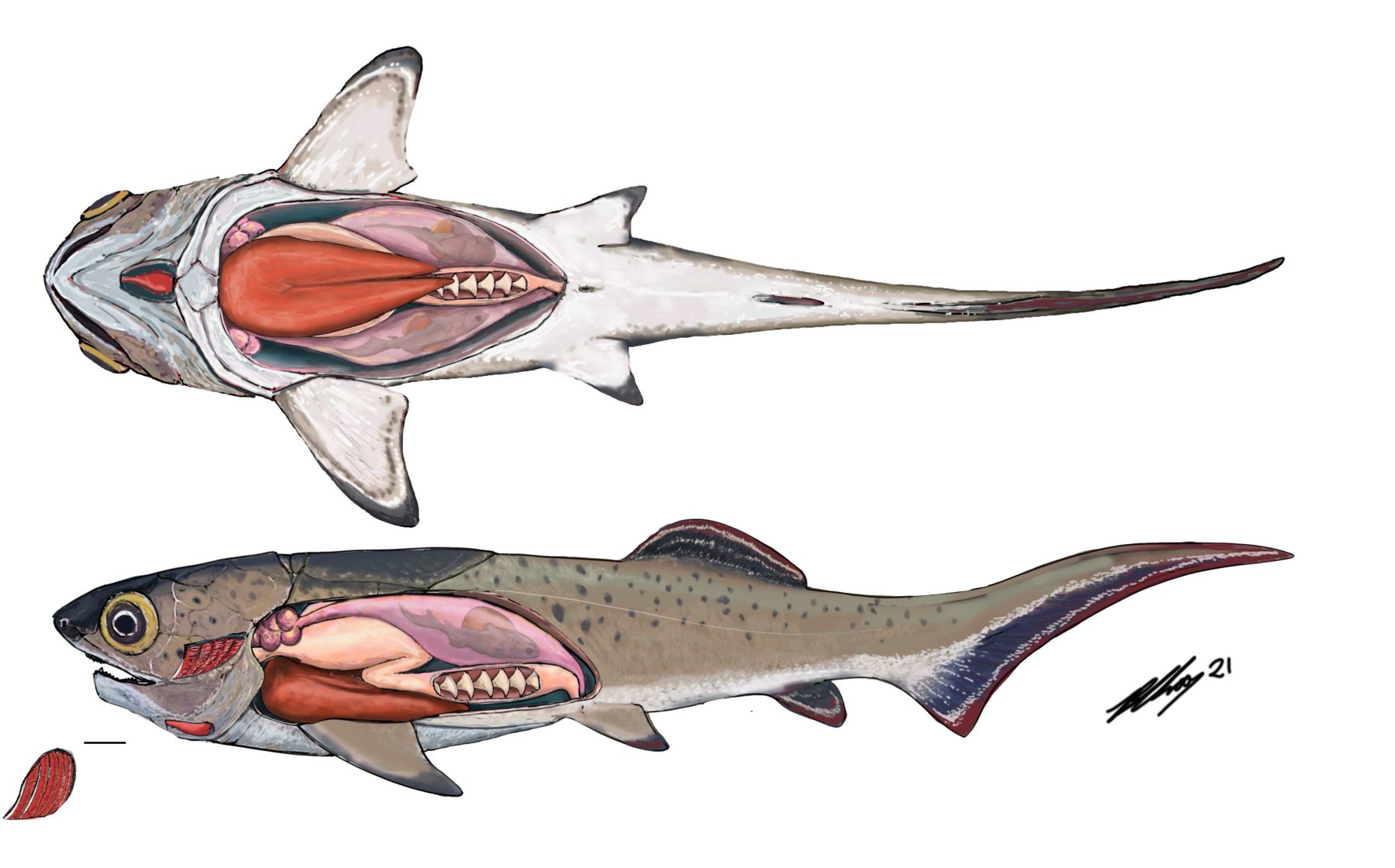380-million-year-old fossilised heart discovered in WA

Palaeontologists from Curtin University have discovered the 380-million-year-old fossilised organs of the prehistoric jawed fish Arthrodire placoderm. The preserved liver, stomach, intestine and heart – the oldest ever found – were discovered at the Gogo Formation, which is a lagerstätte (a German term that refers to a sedimentary deposit that exhibits extraordinary fossils with exceptional preservation—sometimes including preserved soft tissues) in Western Australia’s Kimberley region.
The specimens, which are still embedded within limestone concretions, were scanned with neutron beams and synchrotron x-rays, allowing researchers to construct 3D images of the soft tissue organs without destroying them.
“For the first time, we can see all the organs together in a primitive jawed fish,” said Professor Kate Trinajstic, lead researcher from Curtin University’s School of Molecular and Life Sciences and the Western Australian Museum. “These fish literally have their hearts in their mouths and under their gills, just like sharks today.”

The prehistoric fish had a complex s-shaped heart that was made up of two chambers, with the smaller chamber sitting on top. According to Professor Trinajstic, these features were advanced in such early vertebrates, offering insight into how the neck and head region evolved over time to accommodate jaws.
“Evolution is often thought of as a series of small steps, but these ancient fossils suggest there was a larger leap between jawless and jawed vertebrates,” she says.
The arthrodire’s liver also offers a window into its evolutionary past. Like modern sharks, the prehistoric fish’s large liver allowed it to maintain buoyancy.

“Some of today’s bony fish, such as lungfish and birchers, have lungs that evolved from swim bladders,” says Kate. “We found no evidence of lungs in any of the extinct armoured fishes we examined, which suggests that they evolved independently to the bony fishes at a later date.”
The extinct armoured jawed fishes lived during the Devonian period (419–359 million years ago).




